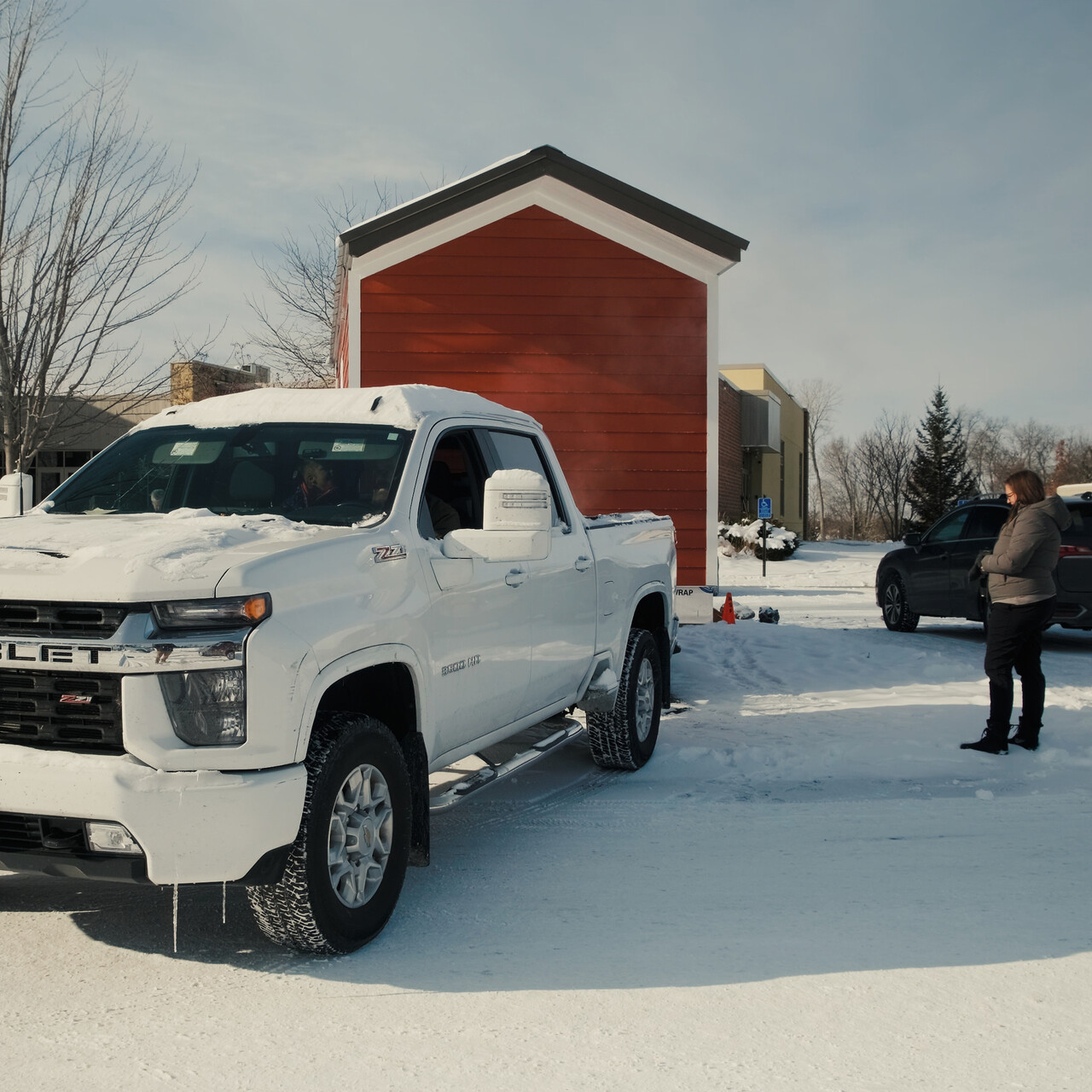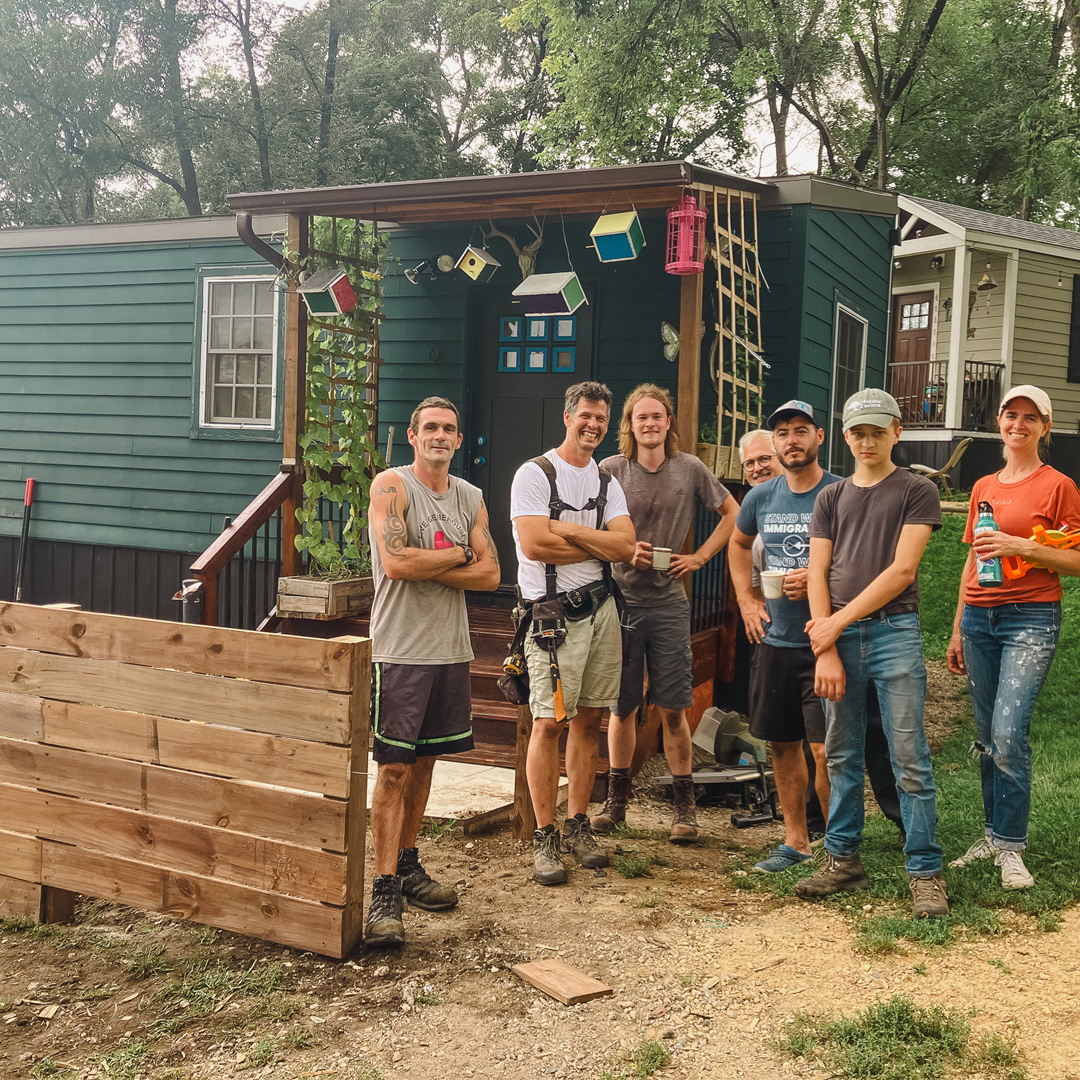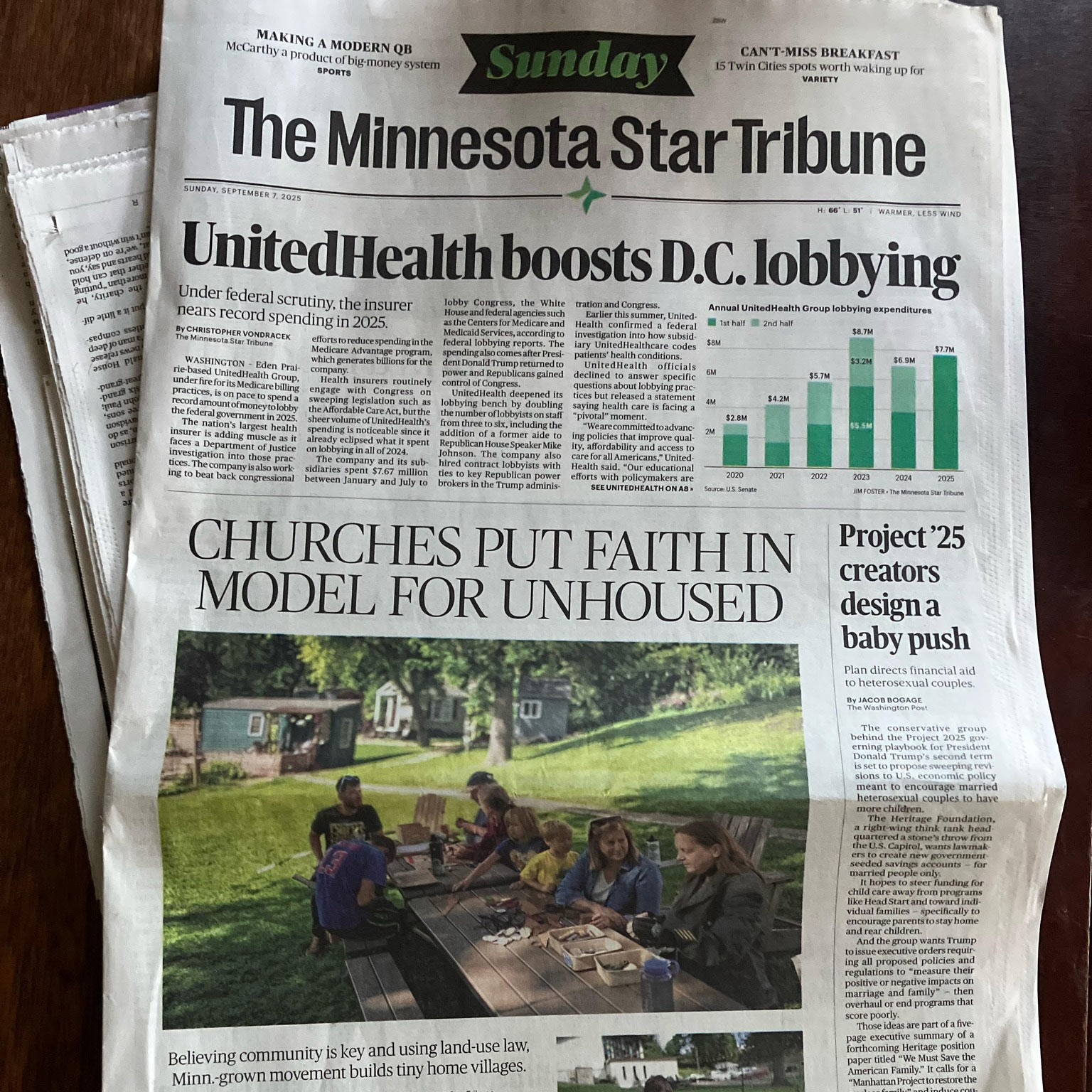How we build
We build tiny homes very much like traditional homes. They are framed and finished in a way that most builder’s would be well acquainted with. Volunteers can quickly become acclimated at any stage of the project. And any future maintenance can be done by common skillsets.
There are five primary stages to building a Settled home.
Stage one
Design.

The layout of the homes is grounded in research.
Simple, dual-purpose spaces are designed to work for many different people with different living styles. Currently, a man in his 30s, a woman in her 50s and a young family of three are living in homes with the same floor plan. We are always coming up with new designs and iteratively improving current layouts.

Stage two
Trailer.

The trailers we use are rated for 10,000 Lbs.
The homes are built directly onto the trailer. By using a trailer, we can transport a home from our production center, to be framed, to a faith community across town to be finished, back to the production center for interior design and then finally park it permanently at its Sacred Settlement.
Stage three
Framing.

Homes can be framed in a single day.
The homes are framed in a variety of ways by our building team or in partnership with a building company who graciously volunteers their workforce. At the end of the framing stage, the home is wrapped and inspected, then driven to its finishing location.

Stage four
Finishing.

During the finishing stage, the home is covered inside and out.
Whether a home is finished by us or a partner, the process is the same. The exterior is wrapped with steel and wood. The interior walls are lined with plywood and car-sided. Windows and doors are installed. All trim is cut and fit. Cabinets and bed frames are put in.
Stage five
Furnishing.

The interior is designed with heart.
Every cozy chair and mixing bowl is carefully chosen to reinforce the heart of home. The items we choose are meant to work for a wide range of people and preferences.



Our dedicated volunteers are constantly mining estate sales and antique shops for items that are timelessly functional. When we interact with things that have a story, even simple daily tasks become meaningful.








